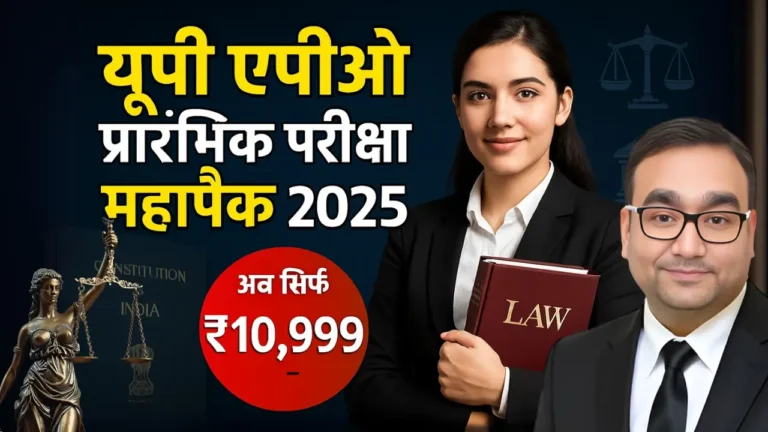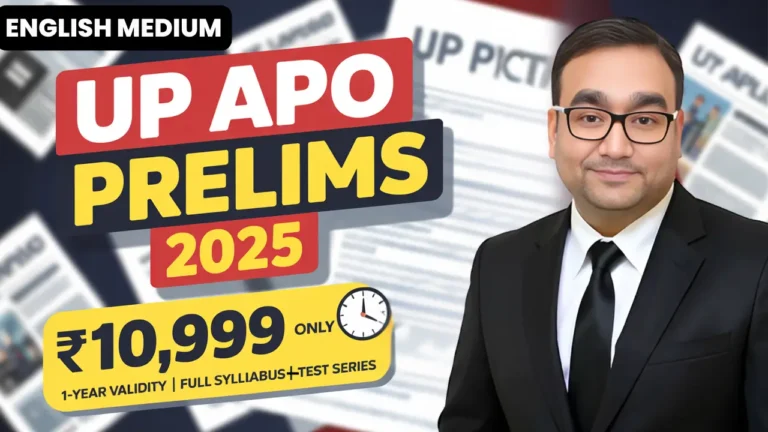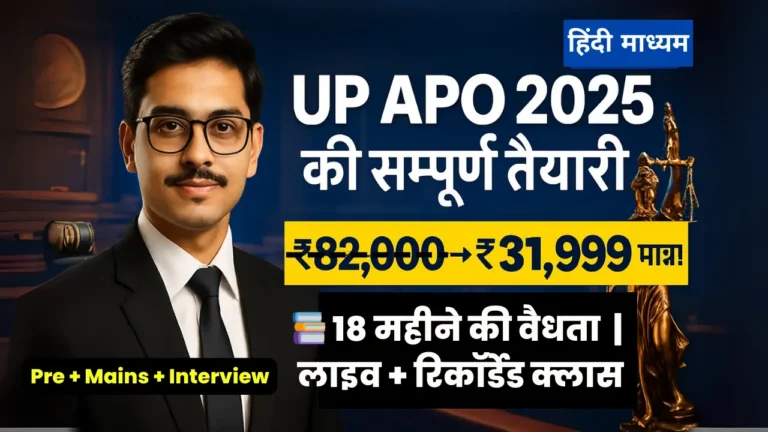The strangest legal cases ever filed in India reveal the quirks and complexities of the Indian legal system, from a parrot arrested for verbal abuse to a woman suing a TV station for a wrong weather forecast. These bizarre lawsuits, spanning identity theft, consumer grievances, and even supernatural claims, highlight the diverse challenges faced by courts. This blog explores some of the most unusual cases in Indian legal history, offering insights for Judiciary, APO, and JLO aspirants preparing for 2025 exams.
Table of Contents
Introduction
The Indian legal system, rooted in a rich history of jurisprudence, has witnessed countless cases that have shaped laws and societal norms. However, among these landmark judgments lie some of the strangest legal cases ever filed in India, where the absurdity of the claims has left courts, lawyers, and the public baffled. From a parrot being “arrested” for verbal abuse to a woman suing a TV station for a wrong weather prediction, these cases highlight the quirks and challenges of India’s legal framework. As of April 5, 2025, these bizarre lawsuits offer a unique lens into the diversity of disputes that reach Indian courts, providing valuable lessons for Judiciary, APO, and JLO aspirants preparing for 2025 exams. This blog dives into some of the most unusual legal battles in Indian history, exploring their outcomes and implications.
Strangest Legal Cases Ever Filed in India: A Compilation
1. The Case of the Abusive Parrot: Hariyal’s Arrest
In a truly bizarre incident, a parrot named Hariyal was “arrested” by police in Chandrapur, Maharashtra, in 2015 for allegedly hurling verbal abuses at an elderly woman.
- Details: The complainant, Janabai Sakharkar, a 75-year-old woman, accused her stepson’s pet parrot of verbally abusing her whenever she passed by his house. She claimed the parrot was trained to insult her, shouting derogatory remarks in Marathi. After her complaint, the police took the parrot into custody, or rather, “caged” it, for investigation.
- Outcome: The police, after a brief investigation, found no evidence of the parrot’s alleged verbal tirade. The bird was handed over to the forest department, as it did not speak any abusive words in custody. The case was dismissed, with the court noting the absurdity of holding a parrot legally accountable.
- Significance: This case underscores the misuse of legal processes for personal vendettas, as the stepson later admitted the complaint was likely motivated by family disputes. It also highlights the challenges courts face in filtering frivolous claims.
2. The Bhawal Sanyasi Case: A Prince or an Impostor?
One of the most intriguing identity cases in Indian legal history, the Bhawal Sanyasi Case (1921–1946), involved a man claiming to be a long-lost prince of the Bhawal Estate in Bengal.
- Details: Kumar Ramendra Narayan Roy, the second Kumar of the Bhawal Estate, reportedly died in 1909 while on a pilgrimage in Varanasi. However, in 1921, a sanyasi (Hindu ascetic) appeared in Dhaka, claiming to be the Kumar, who had been presumed dead. Many tenants and locals supported his claim, recognizing his intimate knowledge of the estate. His widow, Bibhabati, however, contested his identity, leading to a prolonged legal battle spanning two trials. The sanyasi moved to Calcutta, where he was welcomed by elites and began using estate revenues.
- Outcome: After years of litigation, the Calcutta High Court in 1940 and later the Privy Council in London in 1946 ruled in favor of the claimant, recognizing him as the legitimate Kumar. Tragically, he suffered a stroke and died shortly after the victory, prompting Bibhabati to claim it was divine punishment for an impostor.
- Significance: Known as one of the strangest legal cases in India, this case captivated public imagination, reflecting the complexities of identity disputes in colonial India. It also highlighted the influence of public opinion on legal proceedings, as the Bengali elite largely supported the claimant.
3. The Weather Forecast Fiasco: Suing a TV Station for Rain
In a peculiar consumer grievance, a woman in Israel—though reported in Indian legal discussions—sued a TV station for a wrong weather prediction, a case often cited in Indian legal circles for its absurdity.
- Details: The woman claimed the TV station forecasted sunny weather, but it rained, causing her inconvenience as she was unprepared. She filed a lawsuit seeking damages for the emotional distress and financial loss incurred due to the inaccurate forecast.
- Outcome: The court dismissed the case, noting that weather predictions are not guarantees and the public must exercise reasonable judgment. The case became a benchmark for frivolous lawsuits in India, often referenced in discussions on consumer rights.
- Significance: While not an Indian case, its discussion in Indian legal contexts underscores the judiciary’s approach to dismissing baseless claims. It also highlights the need for public education on legal recourse, as such cases waste judicial resources.
4. The Rockstar Disappointment: Suing Over a Movie’s Mental Agony
In 2014, a man in Delhi filed a case in a consumer court against the makers of the Bollywood movie Rockstar, claiming it caused him mental agony.
- Details: The petitioner sought ₹50,000 in damages, alleging that watching Rockstar (2011), starring Ranbir Kapoor, inflicted severe emotional distress. He argued that the movie’s portrayal of heartbreak and emotional turmoil negatively impacted his mental health.
- Outcome: The consumer court dismissed the case, with the judge humorously noting that the petitioner likely suffered more loss filing the case than buying the movie ticket. The court emphasized that emotional reactions to art are subjective and not legally actionable.
- Significance: This case illustrates the misuse of consumer forums for trivial grievances, reflecting a broader trend of frivolous litigation in India. It also underscores the judiciary’s role in filtering such claims to maintain efficiency.
5. The Chappal vs. Sandal Debate: A Footwear Tax Dispute
In a strange tax-related case, the Delhi High Court in 2007 was tasked with distinguishing between a chappal and a sandal to resolve a taxation dispute.
- Details: A footwear manufacturer challenged a 10% duty imposed by the government, which classified their product as a chappal. The manufacturer argued it was a sandal, attracting a lower tax rate. The court had to define the difference, ultimately ruling that a back strap distinguishes a chappal from a sandal.
- Outcome: The court upheld the government’s classification, imposing the 10% duty on the manufacturer. The ruling provided clarity on footwear taxation but became a humorous anecdote in legal circles.
- Significance: This case highlights the minutiae courts sometimes handle in tax disputes, reflecting the complexity of legal definitions. It also shows how seemingly trivial matters can escalate to higher courts, impacting industry regulations.
6. The Daydreamer’s Fantasy: Suing Prince Harry for Marriage
In 2021, a woman from Punjab filed a petition in the Punjab and Haryana High Court, claiming that Prince Harry had promised to marry her but failed to do so.
- Details: The petitioner alleged she had been communicating with Prince Harry online and that he proposed to her, only to back out later. She sought legal action to enforce the marriage promise, claiming emotional distress.
- Outcome: The court dismissed the petition, labeling it a “daydreamer’s fantasy.” The judge noted that the claim lacked any credible evidence and was an abuse of the legal process, advising the petitioner to seek psychological help if needed.
- Significance: This case exemplifies the misuse of judicial forums for publicity or delusional claims, wasting court time. It also underscores the need for stricter screening of petitions to prevent such frivolous lawsuits.
7. The Confusing Judgment: A Verdict Sent Back by the Supreme Court
In a rare instance, the Supreme Court in 2015 sent a judgment back to the Himachal Pradesh High Court because it was too convoluted to understand.
- Details: A judge from the Himachal Pradesh High Court delivered a verdict using overly complex vocabulary and syntax, making it incomprehensible. A passage from the judgment read: “The summum bonum of the aforesaid discussion is that all the aforesaid material which existed before the learned Executing Court standing slighted besides their impact standing untenably undermined by him whereupon the ensuing sequel therefrom is of the learned Executing Court while pronouncing its impugned rendition overlooking the relevant and germane evidence besides its not appreciating its worth.” The Supreme Court found it impossible to decipher and returned it for rewriting.
- Outcome: The High Court was directed to rewrite the judgment in clear language, emphasizing the importance of accessibility in judicial writing. The case became a humorous anecdote among legal professionals.
- Significance: This case highlights the judiciary’s responsibility to deliver clear and accessible judgments, ensuring public understanding. It also reflects the occasional quirks in judicial communication.
8. The Missing Bollywood Song: Suing Over a Trailer Discrepancy
In 2016, a moviegoer filed a case against the makers of the Bollywood film Fan, starring Shah Rukh Khan, for excluding a song featured in the trailer.
- Details: The petitioner was disappointed that the song ‘Jabra Fan’, prominently shown in the movie’s trailer, was not included in the final film. He claimed this omission caused him emotional distress and sought damages for false advertising.
- Outcome: The court dismissed the case, noting that trailers are promotional materials and not legally binding representations of a film’s content. The petitioner was advised to manage expectations when watching movies.
- Significance: This case underscores the misuse of legal forums for trivial grievances, reflecting a lack of public understanding of actionable claims. It also highlights the judiciary’s role in dismissing frivolous lawsuits.
9. The Triple Talaq Misadventure: A Fake Divorce Claim
While the Triple Talaq Case (Shayara Bano v. Union of India, 2017) itself is a landmark ruling that declared the practice unconstitutional, a related bizarre incident occurred in 2018.
- Details: A man in Uttar Pradesh claimed his wife had divorced him via triple talaq through a fake letter, seeking to avoid maintenance payments. The wife contested the claim, stating she never issued such a letter. Investigations revealed the husband had forged the document to evade legal obligations.
- Outcome: The court dismissed the husband’s claim, ordering him to pay maintenance under the Muslim Women (Protection of Rights on Marriage) Act, 2017, which criminalized triple talaq with up to 3 years imprisonment. The husband faced additional charges for forgery.
- Significance: This offshoot case demonstrates the misuse of legal provisions for personal gain, even in the context of significant reforms like the triple talaq ban. It also reflects the judiciary’s vigilance in protecting women’s rights.
10. The Ghost Murder Case: A Supernatural Claim
In a peculiar case from Jharkhand in 2013, a man was tried for the “murder” of a ghost, though the case gained more attention in legal discussions than in formal records.
- Details: A villager claimed that a ghost had been haunting his family, causing misfortune. He performed a ritual to “kill” the ghost, which involved symbolically “murdering” it with a sacred object. A rival villager, claiming to be possessed by the same ghost, filed a complaint, alleging the ritual caused him physical harm. The case reached a local court, where the complainant sought damages for the “murder” of his possessing spirit.
- Outcome: The court dismissed the case, ruling that ghosts are not legal entities and cannot be murdered. The judge advised the parties to resolve their dispute through community mediation, noting the case’s lack of legal merit.
- Significance: This case, often cited in legal anecdotes, reflects the intersection of superstition and law in rural India. It underscores the judiciary’s challenge in handling culturally rooted disputes that lack legal grounding.
Critical Analysis: What These Cases Reveal About the Indian Legal System
The strangest legal cases ever filed in India offer a glimpse into the quirks, challenges, and cultural nuances of the Indian legal system.
Strengths
- Judicial Discretion: Courts have consistently dismissed frivolous claims, as seen in the abusive parrot case and the Rockstar lawsuit, maintaining judicial efficiency.
- Adaptability: The Bhawal Sanyasi Case demonstrates the legal system’s ability to handle complex identity disputes, adapting to societal contexts even in colonial times.
- Public Awareness: High-profile bizarre cases, like the triple talaq misadventure, raise awareness about legal reforms, such as the Muslim Women Act, 2017, protecting women’s rights.
- Clarity in Judgments: The confusing judgment case highlights the judiciary’s commitment to accessible language, ensuring public understanding of legal decisions.
Challenges and Concerns
- Frivolous Litigation: Cases like the weather forecast lawsuit and the Prince Harry petition waste judicial resources, as reflected in X posts criticizing “frivolous lawsuits clogging courts.”
- Cultural Misunderstandings: The ghost murder case illustrates the challenge of addressing superstition-based disputes in a legal framework, often requiring alternative dispute resolution.
- Lack of Legal Awareness: Many bizarre cases stem from a lack of public understanding of legal processes, as seen in the Rockstar and Fan song disputes, highlighting the need for legal education.
- Procedural Delays: Even in absurd cases, courts must follow due process, which can delay justice for more pressing matters, as noted in Web ID 2 discussions on court backlogs.
Critical Perspective
The strangest legal cases in India reveal both the resilience and the vulnerabilities of the Indian legal system. While courts have adeptly dismissed baseless claims, the persistence of frivolous lawsuits points to a broader issue of legal literacy, as reflected in X sentiment about “misuse of courts.” The Bhawal Sanyasi Case, though a colonial-era dispute, shows the system’s historical ability to navigate complex identity issues, but modern cases like the abusive parrot and ghost murder highlight cultural challenges that legal frameworks struggle to address. The BNSS, 2023, effective from July 1, 2024, introduces digital tools like online FIRs (Web ID 15), which could reduce frivolous filings by enhancing transparency, but cultural superstitions and lack of awareness remain hurdles. A balanced approach might involve public legal education, stricter screening of petitions, and alternative dispute resolution for non-legal disputes, ensuring courts focus on substantive justice while addressing societal quirks.
Relevance for Judiciary, APO, and JLO Aspirants
The strangest legal cases ever filed in India are a valuable study for Judiciary, APO, and JLO aspirants preparing for 2025 exams:
- Prelims: Expect questions on Bhawal Sanyasi Case (1921–1946), Triple Talaq Case (2017), and procedural laws like BNSS, 2023 (Section 173 for FIRs).
- Mains: Write essays on topics like “Frivolous Litigation in India: Challenges for the Legal System” or “Cultural Influences on Indian Legal Disputes,” discussing Articles 14 (equality) and 21 (right to life), judicial efficiency, and legal literacy, with references to cases like Bhawal Sanyasi and abusive parrot.
- Interviews: Discuss the implications of bizarre cases for judicial efficiency, public perception, and legal education, citing 2025 trends and the need for systemic reforms to address frivolous filings.
Conclusion
The strangest legal cases ever filed in India, from a parrot’s arrest to a prince’s identity dispute, reveal the quirks and challenges of the Indian legal system. Cases like the Bhawal Sanyasi Case highlight historical complexities, while modern absurdities like the Rockstar lawsuit and weather forecast grievance underscore the need for legal literacy. In 2025, the BNSS, 2023, offers digital tools to enhance transparency, but cultural superstitions and frivolous filings remain hurdles. These bizarre legal battles, while humorous, reflect deeper issues of judicial efficiency and access to justice, offering lessons on the balance between law and societal norms. For Judiciary, APO, and JLO aspirants, understanding these cases is essential for 2025 exams, providing insights into legal procedure, judicial discretion, and public perception, and preparing them to tackle questions with a nuanced perspective.
Call-to-Action
Explore the strangest legal cases in India to ace your 2025 exams! Join Doon Law Mentor’s Courses for expert guidance. Follow @doonlawmentor on Instagram for daily legal updates!
FAQs
- What are some of the strangest legal cases ever filed in India?
Cases include a parrot arrested for verbal abuse, the Bhawal Sanyasi identity dispute, and a lawsuit against a TV station for a wrong weather forecast. - What was the Bhawal Sanyasi Case about?
The Bhawal Sanyasi Case (1921–1946) involved a sanyasi claiming to be the long-lost Kumar of Bhawal Estate, leading to a decades-long legal battle over his identity. - Why was a parrot arrested in India?
In 2015, a parrot named Hariyal was “arrested” in Maharashtra for allegedly abusing an elderly woman, but the case was dismissed as baseless. - What happened in the Rockstar movie lawsuit?
A man sued the makers of Rockstar (2011) for causing him mental agony, seeking ₹50,000, but the court dismissed the case as frivolous. - How did the Delhi High Court define a chappal vs. a sandal?
In 2007, the court ruled that a back strap distinguishes a chappal from a sandal, resolving a tax dispute over footwear classification. - What was the outcome of the Prince Harry marriage lawsuit?
In 2021, a woman’s petition claiming Prince Harry promised to marry her was dismissed by the Punjab and Haryana High Court as a “daydreamer’s fantasy.” - Why was a High Court judgment sent back by the Supreme Court?
In 2015, the Supreme Court returned a Himachal Pradesh High Court judgment for being too convoluted, ordering it to be rewritten clearly. - What was the Fan movie song lawsuit about?
A moviegoer sued the makers of Fan (2016) for excluding the song ‘Jabra Fan’ from the film, despite its trailer inclusion, but the case was dismissed. - How did a triple talaq forgery case unfold?
In 2018, a man forged a triple talaq letter to avoid maintenance, but the court dismissed his claim, ordering payment under the Muslim Women Act, 2017. - Why are these strange cases important for Judiciary aspirants?
They highlight judicial efficiency, legal literacy, and cultural challenges, offering insights for prelims, mains, and interviews in 2025 exams.
#StrangestLegalCasesIndia, #BizarreLawsuits, #IndianLegalSystem, #JudiciaryExams #doonlawmentor







